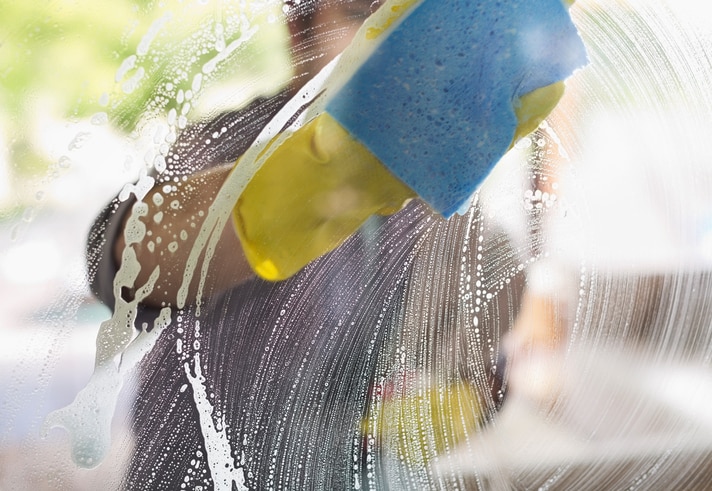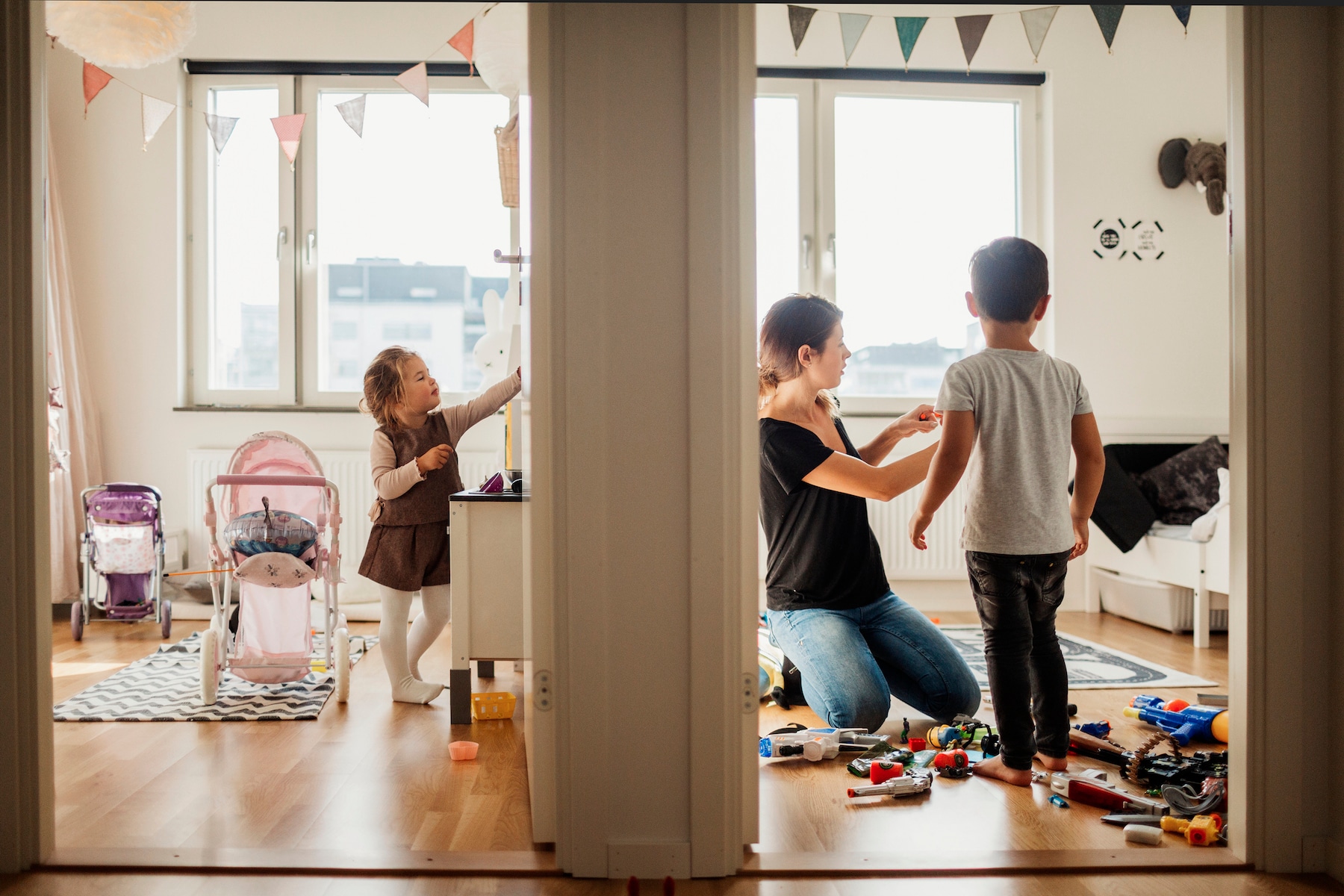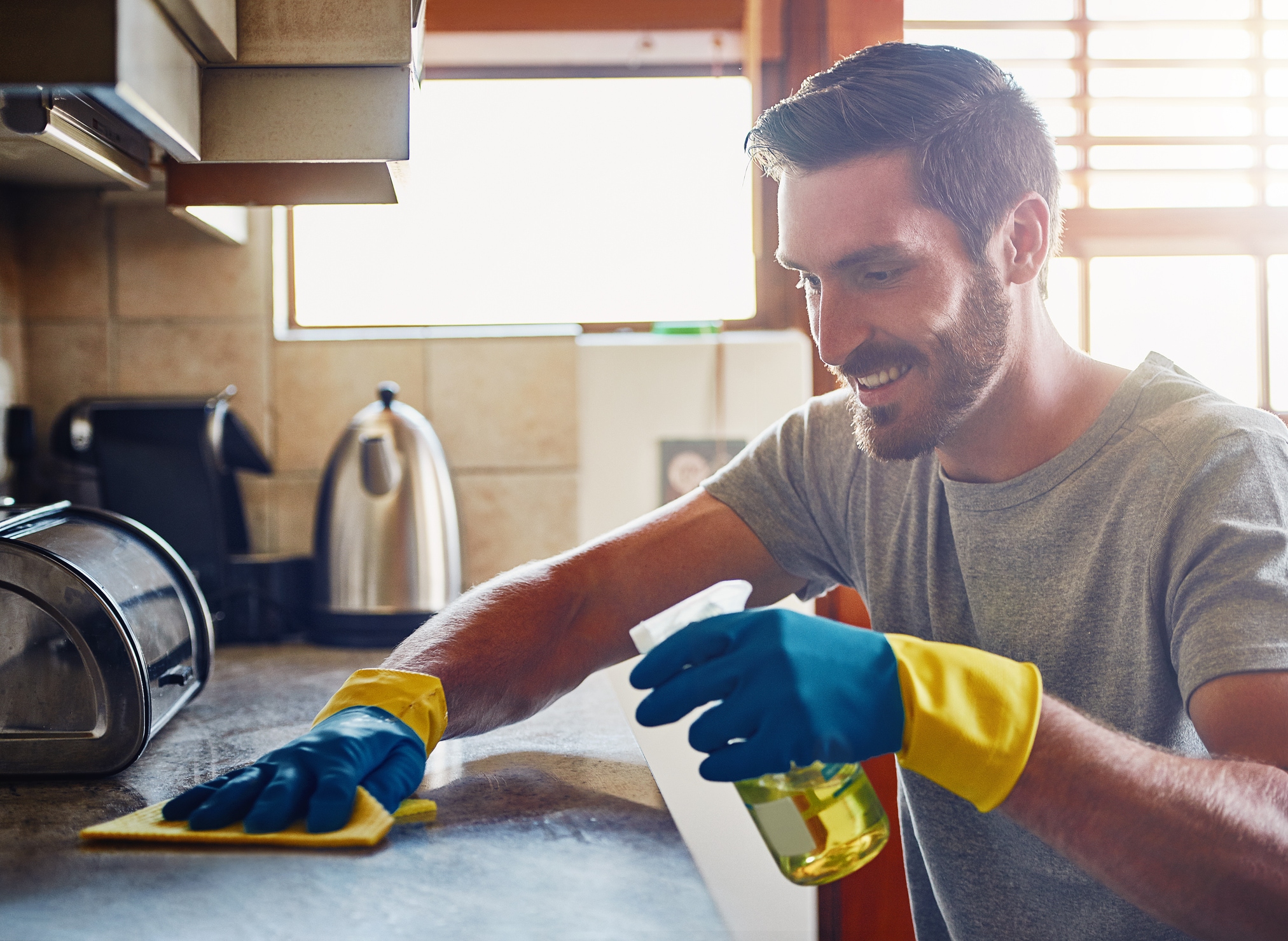The more people learn about what’s in traditional cleaning products — and the potential health effects they may cause down the road — the more they’re searching for natural alternatives. However, the “greenwashing” of products has made it difficult to discern the truly environmentally-friendly, non-toxic stuff from money-making, accountability-skirting ploys (not to mention, “green” products tend to be pricey, and in many cases, sold in plastic bottles). An inexpensive, simple, natural alternative? Using vinegar to clean.
“Vinegar, which is natural, nontoxic and inexpensive, is a great alternative to traditional cleaners.”
— LISA POWERS, FOUNDER OF NONTOX U
“Vinegar, which is natural, nontoxic and inexpensive, is a great alternative to traditional cleaners,” says Lisa Powers, founder of NonTox U, a website dedicated to providing up-to-date information on toxins from peer-reviewed journals, manufacturer interviews and nonprofits. “Some of the chemicals in traditional cleaning products, or combinations of chemicals, have been linked to serious health issues including asthma, cancer, reproductive and developmental toxicity and allergies.” Powers adds that finding out the exact ingredients products contain is nearly impossible, as manufacturers are not required to list everything on the package. “Also, it’s not as simple as calling the company to find out what’s inside, as formulations are often considered trade secrets, and in turn, don’t need to be disclosed.”
“It can be used to clean greasy cupboard faces, soap scum in showers, hardwater stains on hardware, dirty microwaves — vinegar can really tackle it all.”
— DALHSIE MCMULLIN, FOUNDER NATURALLY LUXE CLEANING
Here’s what you need to know about cleaning (almost) everything with vinegar, from how it works, where you should avoid using it, and a lineup of how-to basics.
How vinegar works as a cleaner
Cleaning with vinegar — distilled white or apple cider — won’t just cut down on your exposure to potential harmful chemicals, it will also yield a pretty darn sparkly house. “The acetic acid of vinegar is a very effective, very efficient cleaning agent — without all of the negative toxins that most household cleaners release,” says Dalhsie McMullin, founder and owner of Naturally Luxe Cleaning, an eco-friendly, sustainable cleaning service in Kingston, Ontario. “It’s also incredibly versatile. It can be used to clean greasy cupboard faces, soap scum in showers, hardwater stains on hardware, dirty microwaves — vinegar can really tackle it all.”
Vinegar is generally a solution of water and about 5% acetic acid. Acetic acid is defined as a synthetic carboxylic acid with antibacterial and antifungal properties.
Acetic acid: Acetic acid is defined as a synthetic carboxylic acid with antibacterial and antifungal properties.
What can you not clean with vinegar?
While vinegar is capable of wearing many hats, there are some areas where it shouldn’t be used, such as spots with natural stone, like kitchen counters. “The acetic acid will wear away the finish of the counters and require a professional technician to reseal them,” McMullen says. Powers also adds that vinegar can be damaging to wood, as the acidity can eat through surfaces.
While vinegar does have antibacterial and disinfectant properties, there is no scientific evidence that it can kill viruses, such as COVID-19.
WARNING: While vinegar does have antibacterial and disinfectant properties, there is no scientific evidence that it can kill viruses, such as COVID-19.
Do you have to rinse after cleaning with vinegar?
Unless otherwise noted, there’s generally no need to rinse after cleaning with vinegar. While vinegar has a distinct smell, rinsing vinegar with water after cleaning can result in streaks and water marks.
How to clean (almost) everything with vinegar
Looking for an easy DIY all-purpose cleaner that’s toxin-free? Enter the simple vinegar and water cleaner, which McMullin uses for just about everything. “We use a 1:1 ratio of vinegar and water for a powerful multipurpose cleaner that effectively cleans showers, tubs, sinks, non-stone counters, walls and more,” she says.
DIY multipurpose cleaner recipe:
• 1 part vinegar
• 1 part water
Ready to get down to it? Here are 16 ways to use vinegar to clean.
1. Stovetop
Looking to use vinegar to clean seriously stuck-on messes? (Looking at you, sauce that splattered out of the pot and onto the stovetop [days ago]). McMullin suggests making the same vinegar and water cleaner, but adding a “dot of castile soap” to the mixture. “This helps the cleaner break down grease and grime even more,” she says.
2. Coffeemaker
Cleaning a coffeemaker with vinegar is easier than making a pot of coffee. Simply run a mixture of white vinegar and water through the machine as you would when brewing your morning joe (minus the joe, of course) in order to “descale” the mineral buildup from water. Check to see if your coffeemaker manual suggests a water/vinegar ratio (many do), and be sure to brew a few rounds of plain water afterwards in order to prevent your coffee from tasting like vinegar.
3. Keurig
Keurig coffeemakers, as well as Nespressos, offer descaling solutions (which are made from citric acid, which is generally considered safe) to run through machines in order to prevent buildup. However, if you want to take a cheaper, more sustainable route, you can clean your Keurig with vinegar by filling the reservoir with half white vinegar, half water and brewing without a K-cup. Continue brewing until the “add water” indicator light turns on. Give the machine a half hour rest and then brew about 12 more times with water only to eliminate any residual vinegar.
4. Microwave
“Microwave one cup of vinegar in a microwave-safe bowl to loosen stuck-on mess in the microwave,” says McMullen. “This will make it easy to wipe clean afterwards.”
5. Oven
“Sprinkle baking soda in the oven and mist with a vinegar and water one-to-one ratio spray,” McMullin explains. “Let it sit for five to 10 minutes and clean with a pumice stone or non-scratch sponge.”
6. Toilet
Continuing with the baking soda and vinegar cleaning theme, toilets can also be cleaned with this combo. Combine one tablespoon of baking soda with seven ounces of heated 9% white vinegar. Once the solution is made, pour into the toilet’s tank and let it sit overnight.
7. Windows
“Vinegar is great for cleaning glass,” Powers says. “Mix one part water to two parts vinegar in a spray bottle. If the vinegar smell is too much, you can reduce it by adding more water.”
8. Bath and shower
“Vinegar can be mixed with other natural cleaners, such as baking soda and lemon juice for deeper cleaning,” Powers notes. “Mix a paste of vinegar and baking soda to clean soap scum in bathtubs and showers.”
9. Showerhead
Another way to use vinegar in the bathroom? Using it to descum the showerhead. Fill a plastic bag with white vinegar and secure it to the shower so that the head is submerged and leave it overnight.
10. Rusty tools
Soak rusty tools in a pail of vinegar and scrub with a brush to clean and freshen them up.
11. Carpet stains
According to the Vinegar Institute, one teaspoon of liquid detergent mixed with one teaspoon of white distilled vinegar in a pint of lukewarm water will help get rid of non-oily stains from carpets. “Apply it to the stain with a soft brush or towel and rub gently,” the site instructs. “Rinse with a towel moistened with clean water and blot dry. Repeat this procedure until the stain is gone.”
12. Hard water stains
Hard water stains can be tough to remove from glass shower doors, but according to Powers, vinegar can do the trick. Here are her instructions:
- Using a sponge, rub lemon juice on the glass.
- Scrub over the lemon juice with a mixture of one-part vinegar and three-parts baking soda.
- Let it sit for three hours.
- Combine one-part vinegar to one-part water in a spray bottle and spray over the door.
- Use a squeegee to remove the residue and wipe with a towel.
13. Laundry
For extra fresh clothes, add one cup of vinegar to the washing machine during the final rinse cycle to help break down soapy residue — among other things.
14. Plastic cutting boards
Cutting boards are hotbeds for germs, so thoroughly washing them after use — especially if raw meat was involved — is essential. Using one-part vinegar, one-part water, either spray the cutting board and wipe clean or pour directly onto a rag and rub. Rinse afterwards.
15. Garbage disposal
Becky Rapinchuk, founder of Clean Mama, recommends pouring a quarter of a cup of white vinegar down the garbage disposal and letting it sit for a few minutes before running cold water down the drain.
16. Vinyl and laminate floors
Another tip from Clean Mama: Use vinegar to clean vinyl and laminate floors. According to Rapinchuk, mix equal parts vinegar, water and rubbing alcohol and a drop of dish soap. Mix liquid, spray floors and wipe clean or mop.
What’s the bottom line?
“Vinegar is an excellent cleaning agent that is 100% natural,” says McMullin. “The biggest benefit of having vinegar in your cleaning arsenal is the ability to have a powerful clean without exposing yourself or any family members to harsh chemicals.”





